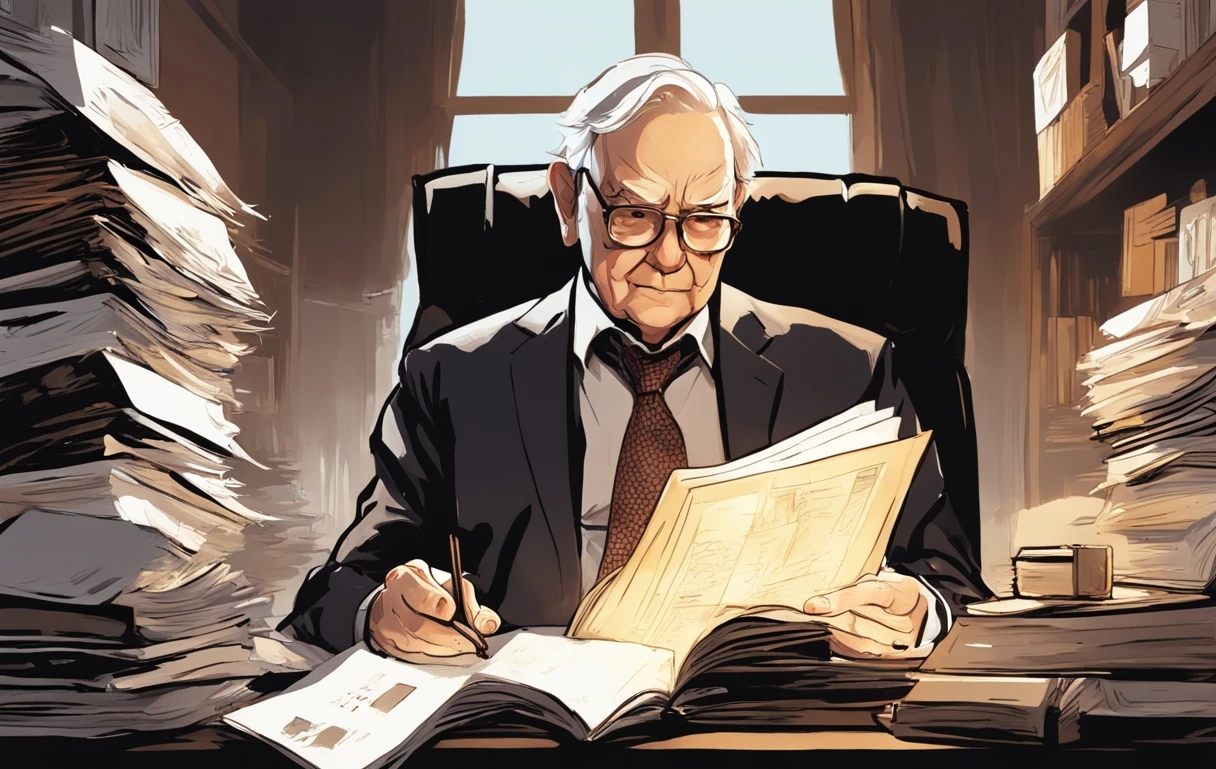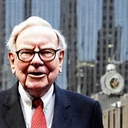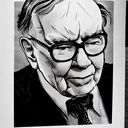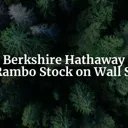Tags: History
This fanpage is not officially affiliated with Berkshire Hathaway: Disclaimer
We take a look at Warren Buffett's most unconventional investments, from a prominent trading scandal to Japanese trading houses. Discover the strategic acumen, visionary approach, and invaluable lessons that have shaped Berkshire Hathaway's success.

Introduction
Berkshire Hathaway stands as an emblem of diversified success, a conglomerate that has defied conventional wisdom under the stewardship of Warren Buffett and Charlie Munger ↗. Known for its strategic and often unconventional investments, Berkshire Hathaway has become a beacon for investors worldwide. Buffett's investment philosophy, deeply rooted in long-term value investing, emphasizes holding companies with strong fundamentals and a robust competitive edge. This approach has not only yielded remarkable returns but has also set a benchmark in the investment community.
Inspired by Berkshire's recent move into Chubb, this article aims to uncover five of Berkshire Hathaway's most unusual investments, delving into the strategic thinking and unique circumstances that guided these decisions. To appreciate the ingenuity behind these investments, it's essential to understand Berkshire Hathaway's journey from its humble beginnings as a textile company in 1839 to its transformation under Buffett's leadership since 1962 8.
The economic and political landscapes during key investment periods have significantly influenced Berkshire's strategy ↗. From the post-war industrial boom to the volatile markets of the 1980s and beyond, each era presented unique challenges and opportunities. As we explore these investments, consider how they reflect broader trends in the business world and the invaluable lessons they offer to investors.
The Berkshire Hathaway Textile Origins
Founded in 1839 by Oliver Chace in Rhode Island, Berkshire Hathaway began as a textile manufacturing company 8. The company underwent significant changes over the years, including a merger in 1929 with Valley Falls Company to form Berkshire Fine Spinning Associates and another merger in 1955 with Hathaway Manufacturing Company 8. The origins of Warren Buffett's Berkshire Hathaway takeover are a testament to his original and creative thinking ↗: Buffett's initial investment in Berkshire Hathaway in 1962 marked the beginning of a transformative era. By 1965, he had taken control of the company, recognizing its potential despite its struggling textile operations 8. One of Buffett's most strategic moves came in 1967 when he expanded Berkshire into the insurance industry, a decision that would lay the foundation for the conglomerate's future growth 8. The insurance business provided a steady stream of cash flow, which Buffett could then reinvest into other ventures.
In 1985, Berkshire Hathaway shut down its last textile operations 8. This decision was driven by the decline of the textile industry in the United States and the economic challenges faced by manufacturing companies. The closure of the textile division underscored the importance of recognizing and acting on changing market conditions and the value of strategic pivots.
For investors, the story of Berkshire Hathaway's origins offers critical strategic lessons. It highlights the need for flexibility and adaptability in investment strategies and the importance of being willing to pivot when necessary. As we transition to explore Buffett's knack for spotting value in unexpected places, remember that his journey with Berkshire Hathaway began with a willingness to transform and innovate. And maybe a bit of stubbornness.
Let's dive into the list. Please note that the selected investments are based on the author's interests. Berkshire Hathaway's history is so colorful that this list could easily be extended, and we may do so on another occasion. Starting with number one:
1. The Salomon Brothers Saga
Salomon Brothers, once a prominent investment bank, held a storied history and significant influence in the financial markets. Known for its aggressive trading strategies and innovative financial products, Salomon was a powerhouse on Wall Street. However, the firm's reputation faced severe challenges in the early 1990s due to a major trading scandal that nearly brought it to its knees 3.
In 1987, Warren Buffett made a strategic move by investing $700 million in Salomon's convertible preferred stock. This investment was aimed at preventing a hostile takeover by corporate raider Ronald Perelman. Buffett's decision was influenced by a lack of reasonably priced stocks at the time and his positive view of John Gutfreund, Salomon's CEO. The deal involved convertible preferreds, which Buffett saw as fixed-income investments with lottery tickets attached. The security paid 9% and was convertible into Salomon stock at $38 per share 3.
The Trading Scandal. The turning point came in 1991 when Paul Mozer, a managing director at Salomon, was found to have broken Treasury's bidding rules. Mozer bid for more than 35% of Treasury securities in December 1990 and February 1991, stuffing the securities into Salomon's account without customer authorization. This scandal led to a regulatory fallout, with the Federal Reserve and the Treasury Department taking harsh actions against Salomon. The firm's stock price plummeted, and short-term lenders began selling off Salomon's debt securities, leading to a run on the company 3.
Amid the crisis, Buffett stepped in to protect Berkshire Hathaway's $700 million investment and fulfill his obligation to all shareholders. He took on the role of interim chairman of Salomon Brothers, earning just $1 a year and without an employment contract. Buffett's leadership was crucial in navigating the company through the tumultuous period. He insisted on full disclosure of the facts to the board and worked tirelessly to restore confidence in the firm 3.
Salomon faced significant regulatory and legal challenges during this period. The firm was barred from bidding at Treasury auctions, a move that could have devastated its reputation and credit. However, Buffett's negotiations with the Treasury and Federal Reserve helped lift part of the ban, allowing Salomon to continue its operations. Despite these efforts, Salomon settled for $290 million in charges related to the wrongdoing 3.
Under Buffett's interim leadership, Salomon implemented strategic changes to stabilize the company. The crisis was eventually resolved, and Salomon's stock opened in an orderly fashion, though it fell about a point and a half on the first trading day post-crisis. Buffett's involvement underscored the importance of ethical leadership, transparency, and cooperation with regulators. His efforts not only protected Berkshire's investment but also highlighted the critical role of integrity in corporate governance 3.
In the following video from 1991 (!) you can see how Warren Buffett as interim chairman of Solomon Brothers, testifies before the House of Commerce. Mr. Buffett does not have too many parts, though, you may want to skip directly to 48 minutes:
The Salomon Brothers saga offers valuable lessons on the importance of ethical leadership and transparency. Buffett's insistence on full disclosure and cooperation with regulators helped navigate the firm through one of its darkest periods. For investors, the episode underscores the need for vigilance and ethical conduct in the face of corporate crises.
2. The USG Corporation Turnaround
USG Corporation, also known as United States Gypsum Corporation, is the largest distributor of wallboard in the United States and the largest manufacturer of gypsum products in North America. Founded in 1901, USG has a long history of innovation and resilience, having introduced Sheetrock in 1917 and successfully navigating challenges like the Great Depression through strategic management 2.
In 2013, Warren Buffett's Berkshire Hathaway became the largest shareholder in USG Corporation, holding roughly 31% of the company's stock. Buffett viewed USG's bankruptcy in 2001, which was a result of legacy asbestos lawsuits, as one of the most successful managerial performances he had ever seen. This confidence in USG's management and its strategic direction led Buffett to invest heavily in the company 12.
USG's entry into Chapter 11 bankruptcy proceedings in 2001 was a strategic move to resolve legacy asbestos lawsuits. The process was successfully completed in 2006, allowing USG to emerge stronger and more focused on its core operations. This period of restructuring was crucial in setting the stage for the company's future growth and profitability 2.
During the Great Recession, USG implemented several strategies to navigate the economic downturn. The company focused on cutting costs and closing older, less efficient operations. These measures helped USG return to profitability in 2013, posting $2 million in net earnings in the first quarter and $26 million in the second quarter. USG's ability to adapt and innovate during challenging times underscored its resilience and strategic acumen 2.
In 2018, USG entered into an agreement to be purchased by Knauf, a German building materials company. The deal, which closed in 2019, was valued at $7 billion. Buffett's investment in USG netted around $2 billion from this takeover bid, marking a significant return on investment. This acquisition highlighted the value of strategic partnerships and the importance of seizing favorable opportunities 12.
Despite his reputation for rarely selling investments, Buffett was happy to sell USG due to the high bid from Knauf. This decision underscores Buffett's pragmatic approach to investment, where he is willing to capitalize on favorable offers to maximize returns. The sale of USG was a testament to Buffett's ability to balance long-term investment strategies with timely exits 1.
The USG Corporation turnaround offers several key takeaways for investors. Patience, strategic management, and the ability to seize the right opportunities are crucial elements of successful investing. Buffett's involvement with USG highlights the importance of backing strong management teams and being prepared to navigate through crises. For Berkshire Hathaway shareholders, the USG saga is a reminder of the value of strategic foresight and the benefits of long-term investment horizons.
3. The Buffalo News Acquisition
The Buffalo News. In 1977, Warren Buffett and Charlie Munger made a bold move by acquiring the Buffalo Evening News, a regional newspaper serving a 10-county area in western New York. With a daily circulation nearing 300,000 and revenues around $157 million, the Buffalo News was a significant player in the local media landscape 4. The acquisition of the Buffalo Evening News was a substantial investment for Berkshire Hathaway, costing $32.5 million, which represented a staggering 25% of the company's net worth at the time 4. This move was not just a financial commitment but also a testament to Buffett and Munger's belief in the potential of the newspaper industry.
Upon acquiring the Buffalo Evening News, Buffett and Munger undertook several strategic changes to revitalize the publication. They dropped "Evening" from the paper's name, reduced its price, and launched a Sunday edition to capture a broader market share 4. These aggressive moves, however, did not go unnoticed by competitors, who sued for anti-competitive practices.
The legal challenges posed a significant threat, but Munger's legal expertise proved invaluable. He adeptly navigated the anti-competitive lawsuits, ensuring that the Buffalo News could continue its operations and strategic initiatives 4. Munger famously remarked, "They bought a lawsuit when they bought that paper... But I never did believe they could lose," reflecting his confidence in their legal strategy.
Despite initial losses, the Buffalo News eventually turned profitable, becoming one of the most profitable newspapers in the United States 4. This transformation was a testament to the strategic vision and resilience of Buffett and Munger. Their ability to adapt and innovate in a challenging industry environment allowed the Buffalo News to dominate the regional market.
The late 20th century was a tumultuous period for the newspaper industry, marked by increasing competition from television and other media. However, the strategic changes implemented by Buffett and Munger allowed the Buffalo News to thrive, demonstrating the potential for success even in a declining industry.
The acquisition and transformation of the Buffalo News offer several strategic lessons. It underscores the importance of strategic innovation, legal acumen, and market positioning in turning around struggling businesses. Buffett and Munger's ability to see beyond the immediate challenges and focus on long-term potential was crucial to their success.
The Buffalo News was ultimately sold to Lee Enterprises in the beginning of 2020, along with the rest of Berkshire's newspaper portfolio. For investors, the Buffalo News acquisition highlights the value of a long-term vision and resilience in the face of initial setbacks. It serves as a reminder that strategic investments, even in declining industries, can yield significant returns when guided by insightful leadership and innovative strategies.
4. The Blue Chip Stamps Deal
Blue Chip Stamps, a trading stamp company, played a pivotal role in the early investment careers of Warren Buffett and Charlie Munger. This company, which issued trading stamps that customers could collect and redeem for merchandise, was a significant investment for the duo 5.
In 1971, Buffett and Munger, along with their partnerships, began acquiring significant stakes in Blue Chip Stamps. They personally owned 13% of the company, while Berkshire Hathaway held 17%, Diversified Retailing Inc. owned 16%, and Munger's partnership owned 8% 5. These investments laid the groundwork for their future strategic moves.
The strategic merger of Diversified Retailing into Berkshire Hathaway was a crucial step in consolidating their control over Blue Chip Stamps. This merger increased Berkshire's ownership of Blue Chip to 60% 5, providing Buffett and Munger with a significant stake and greater influence over the company's direction. In 1983, Berkshire Hathaway acquired the remaining 40% of Blue Chip Stamps for $1.6 billion, consolidating its control over the company 5. This complete acquisition provided Buffett and Munger with substantial capital, which they could deploy into other growth opportunities.
The Blue Chip deal was revolutionary not just for its strategic execution but also for the capital it provided. The significant funds generated from this acquisition allowed Buffett and Munger to invest in other undervalued businesses, fueling Berkshire Hathaway's growth and diversification 5. The trading stamp industry was in decline during this period, but Buffett and Munger's foresight allowed them to repurpose Blue Chip's assets effectively. This strategic repurposing highlights their ability to identify undervalued assets and leverage them for future growth.
The ingeniouity of Berkshire's Blue Chip Stamps investment has also been outlined by Mohnish Pabrai ↗ in detail:
The Blue Chip Stamps deal underscores the importance of identifying undervalued assets and leveraging them for future growth. Buffett and Munger's strategic vision and ability to execute complex mergers and acquisitions were crucial to their success. For investors, the Blue Chip Stamps deal emphasizes the value of strategic mergers and acquisitions in building a diversified investment portfolio. It highlights the importance of foresight, strategic planning, and the ability to repurpose assets in achieving long-term growth and success.
The last example on the list is very familiar to the readers of brk-b.com ↗:
5. The Japanese Trading Houses
In the intricate tapestry of Japan's economy, trading houses—known as sogo shosha—play a pivotal role. These conglomerates, including Mitsubishi ↗, Itochu, Mitsui & Co., Sumitomo, and Marubeni, are the backbone of Japan’s trade and commerce. With thousands of subsidiaries spanning diverse industries from energy to consumer goods, these firms are instrumental in connecting Japan to global markets. Their significance is underscored by their vast networks and the ability to mobilize resources efficiently across sectors67.
In 2017, Warren Buffett made a bold move by investing in these top five Japanese trading houses. This strategic decision was not just a typical equity investment but a sophisticated financial maneuver known as a carry trade. By borrowing in Japanese yen at an incredibly low interest rate of 0.5%, Buffett effectively leveraged the low-cost capital to acquire substantial stakes in these firms. This approach allowed Berkshire Hathaway to benefit from both the earnings yield of the investments and the favorable borrowing terms67.
Incremental Investment and M&A Opportunities. Buffett's strategy extended beyond mere financial investment. He communicated a willingness to support these trading houses through incremental investments and mergers and acquisitions (M&A) opportunities. By offering additional capital and strategic support, Buffett positioned Berkshire Hathaway as a valuable partner to these firms. This approach not only provided the trading houses with growth opportunities but also aligned with Buffett's philosophy of long-term value creation7.
Japan's economic landscape, characterized by low interest rates and a challenging environment for conglomerates, provided a unique backdrop for Buffett's investments. The country's prolonged period of economic stagnation and deflation had led to an environment where borrowing costs were minimal. However, Japanese conglomerates faced significant hurdles, including bureaucratic inertia and a need for more dynamic capital allocation. Buffett's entry into this market was seen as a potential catalyst for change, encouraging more efficient use of capital and strategic growth 7.
In 2023, Buffett explained the investment in the following way:
The results of Buffett's investments have been nothing short of spectacular. By the end of 2023, Berkshire Hathaway's stakes in the five trading houses had appreciated significantly, with the initial investment of ¥1.6 trillion ($10.63 billion) now valued at ¥2.9 trillion. This remarkable increase translated to unrealized gains of 61%, or approximately $8 billion. Such substantial returns underscore the effectiveness of Buffett's strategy and the potential of these trading houses to generate long-term value6.
Buffett's foray into Japanese trading houses offers several strategic lessons for investors. Firstly, it highlights the importance of international diversification and the ability to identify undervalued opportunities in global markets. Secondly, it demonstrates the value of leveraging favorable economic conditions, such as low interest rates, to enhance investment returns. Lastly, it emphasizes the potential of strategic partnerships and incremental investments to drive growth and create value in mature industries.
For Berkshire Hathaway shareholders, Buffett's investments in Japanese trading houses serve as a powerful reminder of the benefits of diversification and the pursuit of global investment opportunities. By expanding beyond the U.S. market and tapping into the potential of international firms, investors can achieve long-term growth and mitigate risks associated with domestic market fluctuations. Buffett's success with the Japanese trading houses exemplifies the potential rewards of a well-researched and strategically executed international investment strategy.
Warren Buffett's investments in Japanese trading houses represent another masterclass in strategic international investment. By leveraging low-cost capital, identifying undervalued opportunities, and fostering strategic partnerships, Buffett has not only generated significant returns for Berkshire Hathaway but also contributed to the potential revitalization of Japan Inc. For investors, these moves underscore the importance of global diversification and the pursuit of long-term value creation across borders.

Conclusion
Warren Buffett's investments in Berkshire Hathaway's unconventional gems have showcased his unparalleled strategic acumen and visionary approach to investing. From the textile origins of Berkshire Hathaway to the transformative acquisitions of Salomon Brothers, USG Corporation, Buffalo News, Blue Chip Stamps, and the Japanese trading houses, Buffett has consistently demonstrated the ability to identify value in unexpected places and navigate through challenging market conditions.
These investments have not only yielded significant returns for Berkshire Hathaway but have also provided invaluable lessons for investors worldwide ↗ ↗. The Salomon Brothers saga highlighted the importance of ethical leadership and transparency, while the USG Corporation turnaround underscored the value of strategic management during crises. The Buffalo News acquisition showcased the power of strategic innovation, legal acumen, and market domination, while the Blue Chip Stamps deal emphasized the benefits of strategic mergers and acquisitions. Lastly, Buffett's investments in the Japanese trading houses exemplified the potential rewards of international diversification and strategic partnerships.
As shareholders of Berkshire Hathaway, it is essential to draw inspiration from Buffett's approach and remain confident in the conglomerate's long-term prospects ↗. Buffett's legacy as a visionary investor who consistently delivers exceptional results serves as a guiding light for investors seeking to navigate the complexities of the investment landscape. Looking ahead, Berkshire Hathaway's future investment strategies are likely to continue to reflect Buffett's principles of long-term value investing and strategic decision-making.
In a world of ever-changing markets and economic landscapes, the lessons learned from Berkshire Hathaway's unconventional investments serve as a reminder of the importance of strategic thinking, adaptability, and resilience. As we reflect on Buffett's legacy and the enduring success of Berkshire Hathaway, let us continue to embrace innovation, seek out value in unexpected places, and remain steadfast in our pursuit of long-term growth and prosperity in the world of investments.
References
-
The most successful investor in modern history is selling… here’s what it means for you | Schiff Sovereign - www.schiffsovereign.com ↩↩↩
-
Warren Buffett’s Wild Ride at Salomon (Fortune, 1997) - fortune.com ↩↩↩↩↩↩
-
How Buffett and Munger Pushed the Buffalo Evening News to Succes - www.gurufocus.com ↩↩↩↩↩
-
Why Warren Buffett's Blue Chip Stamps Deal Was so Revolutionary - finance.yahoo.com ↩↩↩↩↩
-
Buffett ups his holdings of Japanese trading houses to about 9% - www.japantimes.co.jp ↩↩↩
-
Warren Buffett’s Japan Carry Trade - acquirersmultiple.com ↩↩↩↩












